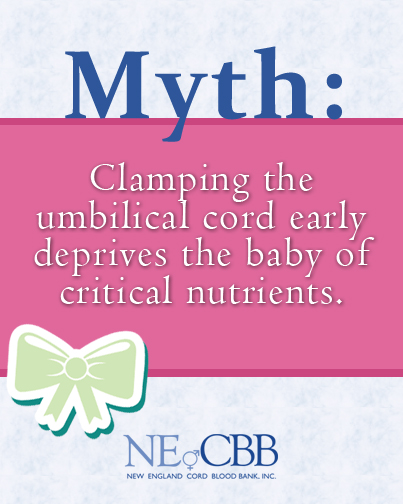
Delayed cord clamping is the subject of much debate. As with any hot topic, there is a lot of information out there to digest, and some of it is not entirely true, or outright false. Parents who want to store their child’s umbilical cord blood often have questions about when to clamp the umbilical cord, and how that timing affects cord blood collection and storage. We’re here to help separate the facts from fiction.
Incorrect! Some of the most current research suggests that a delay in clamping may slightly decrease the risk of anemia in a full term newborn. The medical community in general believes more research needs to be done to determine the benefits of delayed clamping.
Incorrect. Many of our clients have chosen to delay cord clamping by 30 to 60 seconds after birth, while still having a good cord blood collection.
In 2018, the biggest donor bank in the United States, The New York Blood Center, performed a study that showed that delaying the cord clamping by 30-60 seconds only had a minor impact on cord blood collection volumes.³
It depends! With any delay, the volume of the cord blood unit is reduced, but we’ve found that clamping the umbilical cord 30 to 60 seconds minutes after birth poses minimal risk to the collected cord blood volume.
After 60 seconds, the volume of cord blood collections is significantly affected. Since volume is vital to successful cord blood transplants, we recommend that parents who are looking to delay the cord clamp (while maximizing the volume of their newborn’s cord blood) do so for no longer than 30-60 seconds.
Ultimately, we believe the timing of umbilical cord clamping is a decision for families and their doctor to make together.
Pingback: Delayed Cord Clamping: Benefits, Risks and Common Myths
Comments are closed.